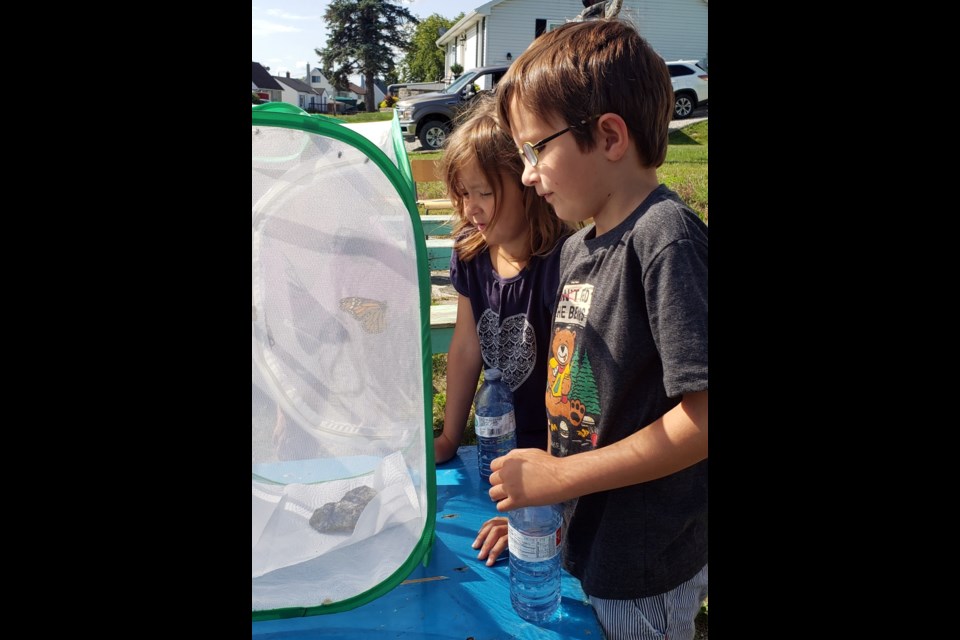The Manitouwadge Museum has been filled with activities this summer, including two nature walks and a monarch butterfly release.
John Lavoie, president of the Manitouwadge Archival and Historical Society Museum and local wildlife enthusiast, recently led inquisitive groups of local folks on tours of the natural wildlife areas within the town.
The first excursion was a two-kilometre jaunt through the Perry Lake trail, where participants learned about the plants and animals that inhabit the area. John pointed out a variety of common flowers, berries, and herbs that grow within the marshy terrain, many of which have nutritional and medicinal uses and others are ominously poisonous and should be avoided.
The second tour was a little more challenging; the two hour hike started at Lion’s Beach on the northwest side of Lake Manitouwadge, which was the original location of the Kiwissa (originally spelled Kwissia) family settlement, who were relocated further east when the town began laying down its foundations.
Lavoie, along with one of this year’s museum student attendants, Aspen Law, led the enthusiastic group down the log strewn, boggy path known by locals as ‘The fitness trail,’ explaining the local flora and fauna along the way.
Also at the museum in August: The Monarchs are ready to fly. Four of the chrysalises that were found on nearby milkweed plants and put into protective care have matured and the beautiful, distinct orange and black butterflies have emerged, ready for the next stage, that of migration.
Lavoie gave a short talk about the lifecycle of the monarchs, which, he explained, begins in the conifer tree forests of Oyamel, Mexico, where the butterflies roost for the winter. In the early spring, the insects make their way north, laying eggs on milkweed leaves. Bright yellow and black caterpillars hatch from these eggs, and eventually morph into butterflies, which in turn will lay its own eggs. This egg-to-adult cycle repeats for several short generations along the route. The butterflies that show up each spring in northern Ontario are actually the great-great grandchildren of the Monarchs that migrated south to Mexico the previous fall.
The butterflies were tagged as part of the Monarch Watch, an organization dedicated to the conservation of the beautiful insects. A small sticker bearing a distinct number is permanently attached to the wing, and, if found, important information about the Monarch’s migration can be collected. Once tagged, the four Monarchs were released and flew away into the warm August sky, much to the delight of the crowd who had gathered to watch the event. There are still five chrysalises at the museum; you can visit them during museum hours, 11:00 a.m. to 6:00 p.m., seven days a week.
Another tag and release event will take place when the monarchs emerge, and more nature hikes and presentations may be planned in the future. If you are interested, contact John Lavoie at (807) 826-3549 or [email protected].
